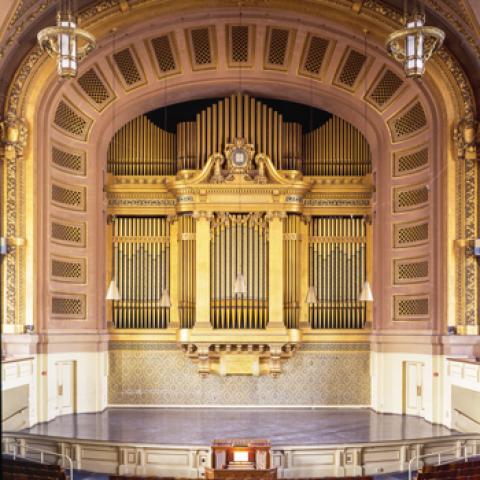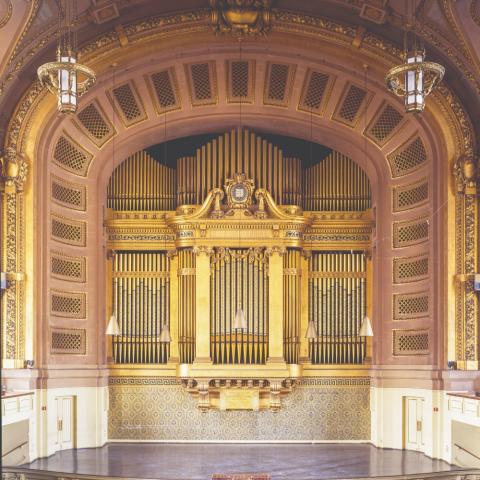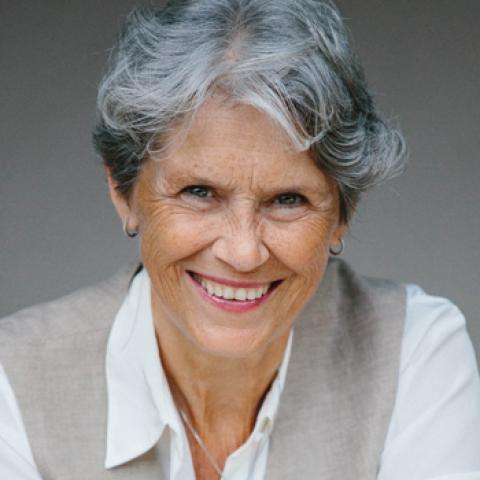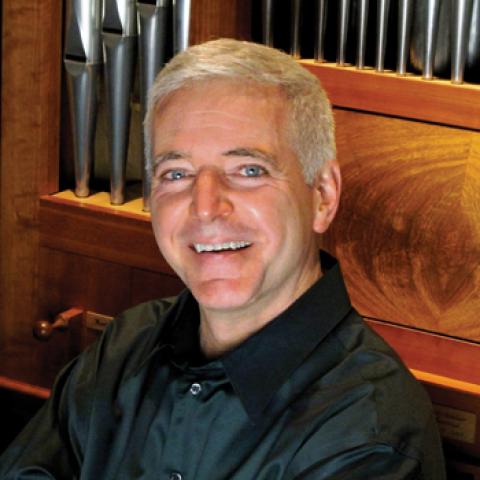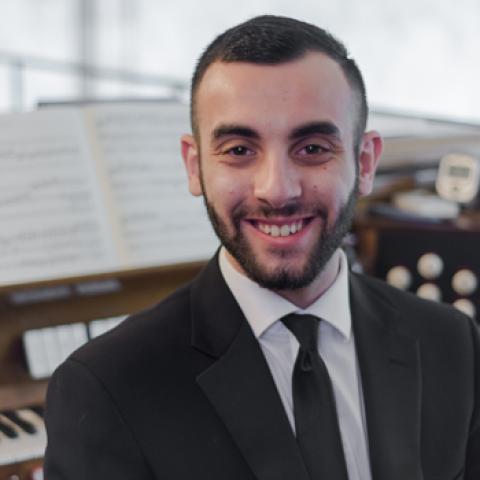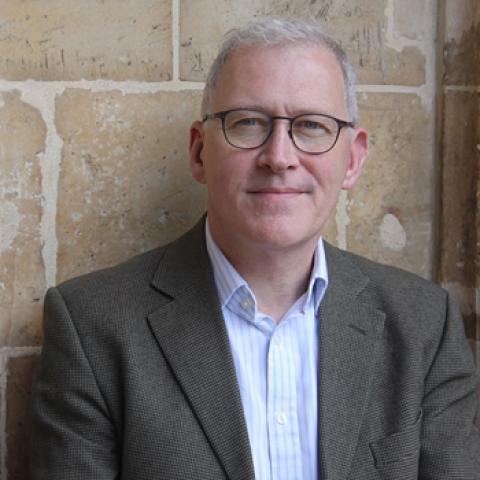The Yale Institute of Sacred Music (ISM) is an interdisciplinary graduate center for the study and practice of sacred music, worship, and the related arts. Its students pursue degrees in choral conducting, organ, and concert voice with the Yale School of Music, or they engage in ministerial or academic studies in liturgy, religion and literature, music, or visual arts with the Yale Divinity School. The ISM is essentially a sequel to the School of Sacred Music at Union Theological Seminary (New York City), which lost its funding in the early 1970s and closed its doors. Robert Baker, then organist and dean of the School of Sacred Music at Union, relocated three faculty and one administrator from the Union school to Yale in New Haven, Connecticut, after securing funding from the Irwin-Sweeney-Miller foundation of Columbus, Indiana. This family foundation was headed by Clementine Miller Tangeman, whose late husband was a musicologist at Union, and her brother J. Irwin Miller, who was serving as senior trustee of the Yale Corporation. With its strong programs in divinity and music, Yale was deemed the perfect place to reconstitute a school or institute of sacred music. In 1973 inaugural director Robert Baker, together with chaplain and liturgical scholar Jeffery Rowthorn, musicologist Richard French, and administrator Mina Belle Packer, migrated to New Haven. After a year of intense preparation, the Yale ISM welcomed its first class of students: five in music and five in divinity. In 2024 the ISM celebrated the fiftieth anniversary of that momentous occasion.
The Yale Institute of Sacred Music is the cover feature in the August 2024 issue of The Diapason:
https://www.thediapason.com/content/cover-feature-yale-institute-sacred-music-fifty-years
This short video traces the growth and impact of the Yale Institute of Sacred Music throughout its fifty years at Yale University. The Video is created by—and posted with permission from—Yale’s Office of Public Affairs and Communications.
For further information
To explore the many opportunities at the Yale Institute of Sacred Music, visit ism.yale.edu. For information about the various degree programs, contact admissions manager Loraine Enlow at loraine.enlow@yale.edu. For information about long- and short-term fellowships, contact assistant director Eben Graves at eben.graves@yale.edu.

